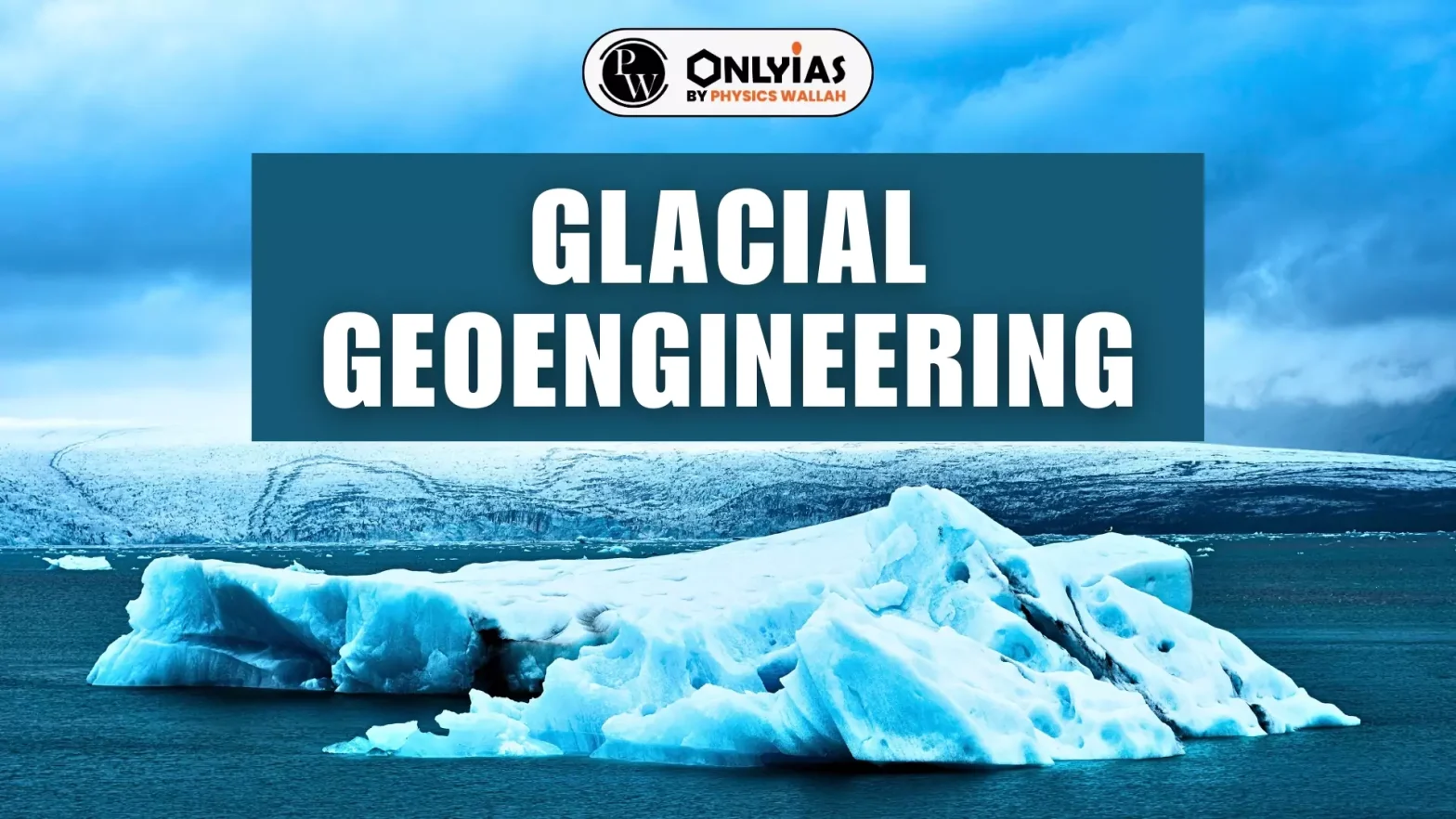A group of scientists has released a white paper on glacial geoengineering to assess possible technological interventions that could help address catastrophic sea-level rise scenarios.
- The white paper results from two recent geoengineering conferences at the University of Chicago and Stanford University, catalyzed by the newly formed Climate Systems Engineering initiative.
- Aim: The paper seeks to understand the benefits, risks, and governance of technologies that might reduce the impacts of accumulated greenhouse gases.
Enroll now for UPSC Online Course
Glacial Geoengineering
- Glacial Geoengineering: It refers to deliberate, large-scale interventions aimed at slowing or preventing the melting of glaciers and ice sheets.
- Major Areas of Research: The report identifies major areas of research for the future, including determining what natural processes might limit ice sheet deterioration and what human interventions could enhance those processes.
Concerns Associated with Rising Sea Level
- Coastal flooding: Low-lying areas become more vulnerable to flooding, especially during storms and high tides.
- Erosion: Increased water levels accelerate coastal erosion, damaging shorelines and infrastructure.
- Habitat loss: Coastal ecosystems like wetlands and mangroves can be submerged, affecting wildlife and biodiversity.
- Saltwater intrusion: Rising seas can contaminate freshwater aquifers, affecting drinking water supplies and agriculture.
- Infrastructure damage: Roads, buildings, and utilities in coastal areas may be damaged or rendered unusable.
- Displacement of people: Coastal communities may be forced to relocate, creating climate refugees.
- Economic impact: Tourism, fishing, and other coastal industries can be severely affected.
Glacier Geoengineering Intervention Proposed
- Fibre-based Curtains: These consist of berms or fibre- based “curtains” attached to the seabed around the feet of ice shelves, which reduce the ice shelves’ exposure to warm ocean water circulating under them.
- Modelling studies suggest that modest curtains could slow sea level rise from the melting of these glaciers by a factor of 10, as they would delay the collapse of Antarctica’s Thwaites and Pine Island glaciers.
- For Example, the Thwaites Glacier in Antarctica might require as little as 50 miles of seabed nets and curtains to make a difference.
- Drilling Holes through the Glacier Bed: This potential intervention involves drilling holes through the glacier bed (to either drain water from below the ice before it affects the glacier or to try to freeze the glacier bed artificially) to slow the flow of streams that carry meltwater off the ice sheet into the sea.
- Hypothesis: Reducing the amount of meltwater would cause the ice stream to freeze up and halt melting.
Check Out UPSC CSE Books From PW Store
Need for Geoengineering Interventions
- Tipping Point: There have been documented changes in every major glacier system worldwide, and as climate change continues, these massive ice sheets will melt, leading to rising global sea levels.
- The sixth assessment report (AR6) by the Intergovernmental Panel on Climate Change (IPCC) estimated that the global sea level could rise between 0.43 m and 0.84 m by 2100 relative to 1986-2005.
Drawbacks
- Changing Local Ecology: Installing curtains could deflect warm water to nearby ice shelves, potentially reducing their stability while changing local ecology in uncertain ways.
- Disruption of Indigenous lives: The installation would disrupt local sea life and the lives of people who live and depend on the ecosystem, including many Indigenous peoples.
- Distraction from Climate Action: Geoengineering technologies are labelled as a ‘dangerous distraction’ from urgent climate action as they can divert attention from necessary immediate actions to a future date. The technologies also cannot be fairly governed globally and come with risks.
- Heavy Technology Intensive: Although the drilling approach might be less harmful to ecosystems, but it might not be very effective as it would require a lot of engineering under harsh conditions.
- Ensuring Effective Collaboration: Any such interventions would need to be conducted with input from nations worldwide, calling for robust participation amongst all stakeholders, especially the Island states.
- Effectiveness of the Potential Outcome: Most of the ice that would affect global sea levels is concentrated in a few areas in the Arctic and Antarctic, thus casting doubts about the possibility and effectiveness of such interventions.
- There is limited scientific and economic understanding of glacial interventions, particularly regarding large-scale ice-sheet deterioration (most notably that caused by marine ice-sheet instability) associated with ice streams and glaciers in Antarctica and Greenland.
Enroll now for UPSC Online Classes
Conclusion
Glacial geoengineering offers promising solutions to combat rising sea levels, but concerns about ecological impacts, effectiveness, and governance must be addressed for sustainable implementation.
![]() 15 Jul 2024
15 Jul 2024

